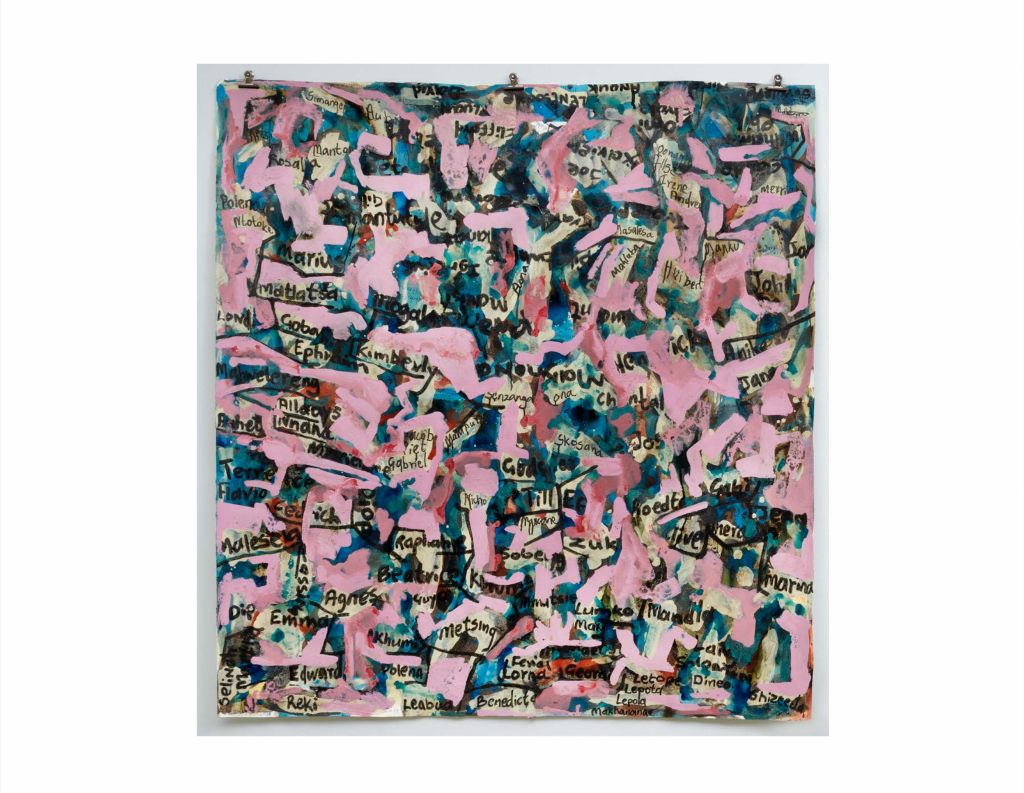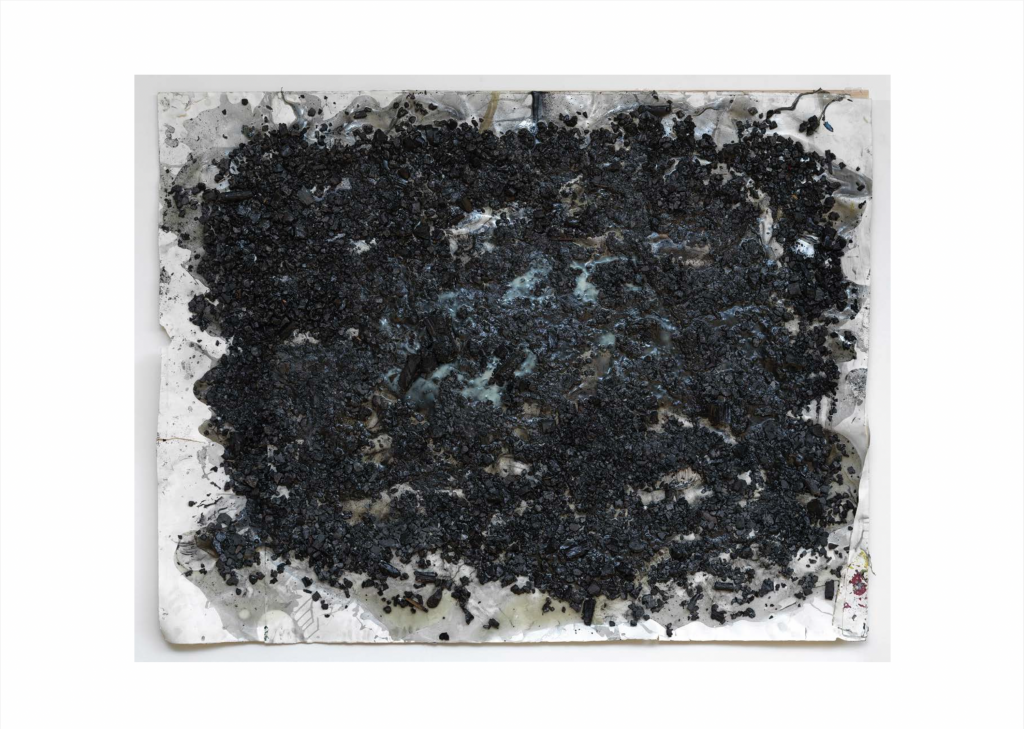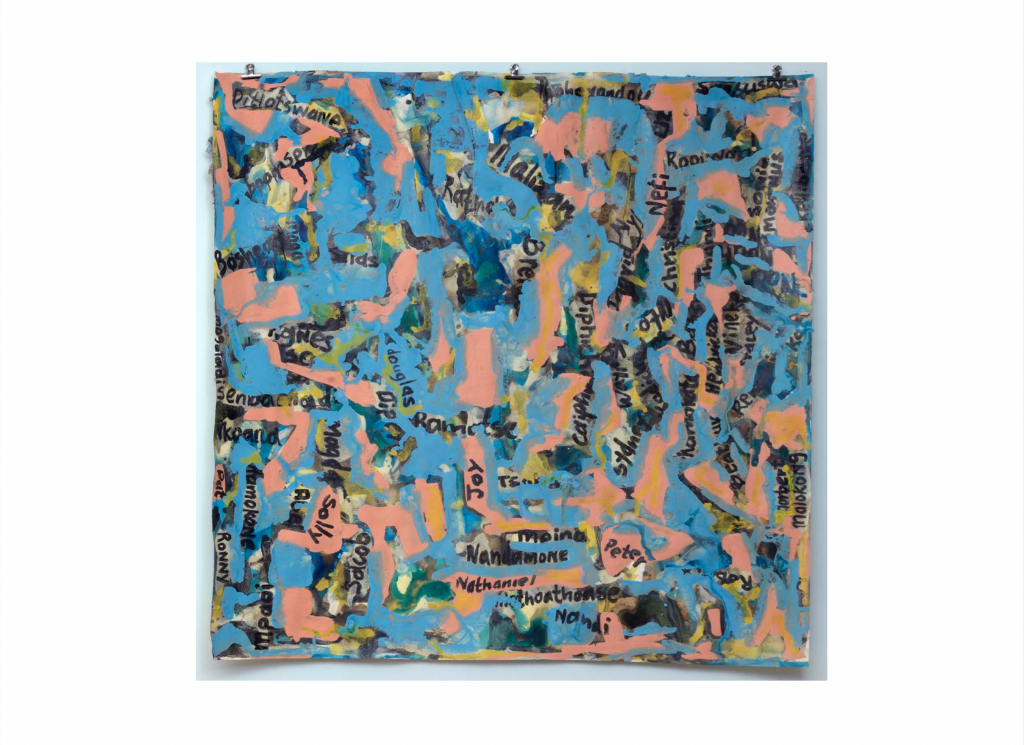#MeetTheArtist The practice of an eternal traveler
During Art Rotterdam you will see the work of hundreds of artists from all over the world. In this series, we highlight a number of artists who will show remarkable work during the fair.

Moshekwa Langa was born in 1975 in the village of Bakenberg in South Africa, during the period of apartheid. Before he focused on the visual arts, he worked for the South African Broadcasting Corporation for a while. He also started experimenting with text, sculpture and sound recordings. In 1997 he was invited for a residency program at the Rijksakademie van Beeldende Kunsten in Amsterdam. Since then, the Dutch capital has been an important base for the artist. Later on, he completed residencies at the Thami Mnyele Foundation in Amsterdam and the Cité Internationale des Arts in Paris.
But it is his native village of Bakenberg that has always played an important role in his imagination. He returns there regularly and made his video work “Where do I begin” (2001) there, which was shown at the Venice Biennale in 2003, in Fondation Louis Vuitton in 2017 and until recently [early December 2022] in a retrospective at KM21 in The Hague. The artist's key work is also part of the Tate Modern collection. The title refers to the song Love Story by Shirley Bassey. Langa only uses a snippet from the song and repeats it throughout the video. For four minutes we see people boarding a bus on a dusty road in Bakenberg, seen from the perspective of a small child. Langa deprives us of a narrative, we only see a series of anonymous legs. Yet the images provide visual information: perfectly ironed trousers next to worn-out shoes, a flowery skirt, an umbrella, an overflowing bag, stained clothing, a missing sock. The sentence "Where do I begin" suggests the beginning of a journey or a story. In combination with the repetitive movement, it says something about themes that recur frequently in Langa's practice: travel, belonging, displacement, memories, identity, inclusion and exclusion, displacement and borders.

At the same time, the video implicitly speaks about the history of South Africa. During the apartheid regime, the National Party had allocated certain areas to black residents, the so-called homelands. That meant that many black residents had to travel great distances every day on their way to work. Bakenberg was not mentioned on any official maps during apartheid, a fact that thoroughly confused the artist when he first found out. It is therefore no coincidence that fictional and incomplete maps play a recurring role in his work. In a way, Bakenberg remains a static memory for Langa, yet he also reflects on contemporary developments in his native village, for example due to the rise of local platinum mining.
Langa's practice is about living between different places, both in a physical and mental sense. He works in a multitude of media: from drawing and photography to video, collage and installation. The artist likes to experiment with different materials and uses salt, coffee, bills, paint, bubble wrap, pigments, cigarette butts, tape, Vaseline, cards, bleach, advertisements, corrugated iron, lacquer, plastic and natural charcoal. Language is also a regular feature in his practice. The artist also made a series of drag paintings that he dragged over the unpaved roads of Bakenberg to create a kind of abstract map of the area. Langa's mostly abstract works are not infrequently marked by a thick texture: the artist layers the materials in the same way he layers meanings — which, incidentally, are not always easy to decipher. The titles of the works often resemble a riddle. Langa regularly applies the paint in puddles and will leave room for chance and free association. The viewer is also invited to associate freely.

Langa's work has been part of the Biennials of Venice, São Paulo, Johannesburg, Berlin, Havana, Gwangju and Istanbul and has been included in the collections of MoMA in New York, M HKA in Antwerp and Tate Modern in London. Furthermore, Langa presented his work at Fondation Louis Vuitton and Fondation Kadist in Paris, the MAXXI (Museo nazionale delle arti del XXI secolo) in Rome, the New Museum and the International Center of Photography in New York, Center d'Art Contemporain in Geneva, Kunsthalle Bern, the Walker Art Center in Minneapolis, the ZKM Museum of Contemporary Art in Karlsruhe and Museum Boijmans van Beuningen in Rotterdam.
During Art Rotterdam, Moshekwa Langa will show his work in the booth of Stevenson in the Main Section.
Written by Flor Linckens


